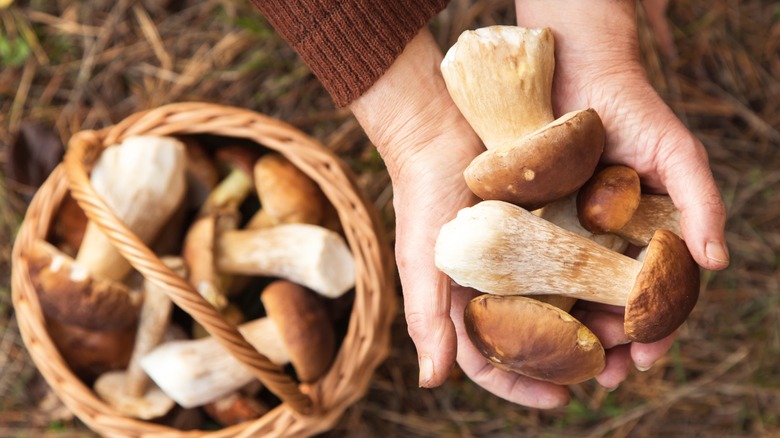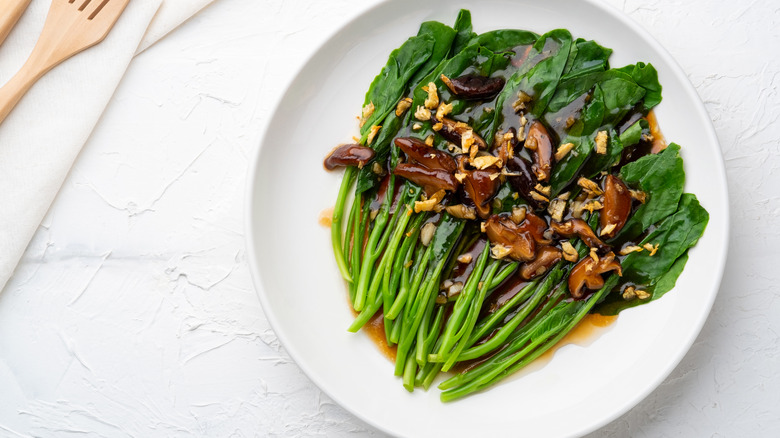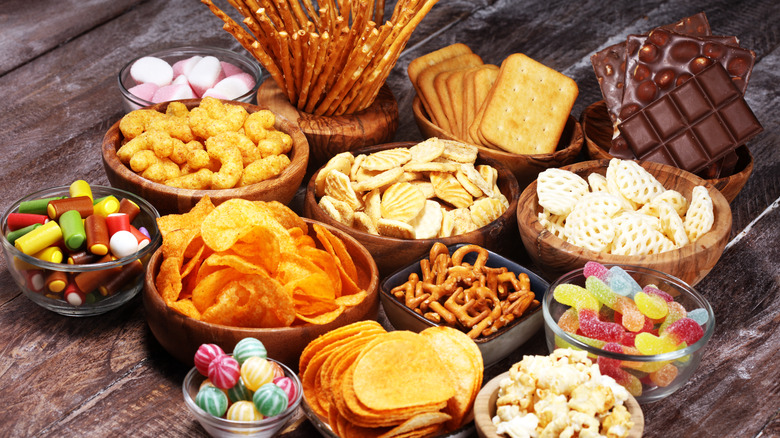Are Mushrooms Keto-Friendly?
The keto diet has become a popular choice for weight loss by switching up the way the body uses food for fuel. It is essentially a low-carb, high-fat diet that causes the body to shift from relying on glucose to power all activity to producing and burning ketones, a fuel source created from fat, according to Harvard Health Publishing. While the body is solely relying on ketones for fuel, this is called ketosis, a process that takes a few days to kick in once carbohydrate sources are drastically reduced.
When following the keto diet, you'll shoot for meal ratios of 10% carbs, 60% fat, and 30% protein, states the Cleveland Clinic. For reference, the average diet emphasizes carb food sources, with most meals comprised of 55% carbs and 30% fat sources. Since the idea is to keep your body in a state of ketosis and prevent it from switching back to using glucose for fuel by counting carbs, it's important to know what foods to choose from. Meat, eggs, and fish are emphasized for protein, while fat sources include oils, butter, nuts, and cheeses. Low-carb vegetables are acceptable and include broccoli, spinach, cucumbers, and tomatoes.
If you're a huge fan of mushrooms, you may be wondering if you need to give up this nutritional powerhouse in order to adhere to the keto diet.
Mushrooms won't put you over your carb limit
Since the objective of the keto diet is to essentially minimize carbs, you must be intentional about the foods you consume. And if you love mushrooms, you'll be pleased to know that you'll be able to continue enjoying them while following a keto meal plan. The experts at Healthline point out that mushrooms are naturally a low-carb option. A cup of diced portobello or white button mushrooms will only set you back 3 grams of carbs for that meal, while a cup of shiitake mushrooms will ring in a bit higher at around 7 grams, which is still acceptable. Not only will you benefit from a low-carb meal when preparing mushrooms, but you'll also be supplying your body with a wide range of nutrients, including fiber, B vitamins, selenium, copper, and potassium.
Luckily, mushrooms can be incorporated into keto meals in a variety of ways. One of the easiest ways to prepare them is to fry them up in a pan with olive oil and some spices, as per Simply Recipes. The oil will add in a nice fat component. You can serve them with a fish or meat of your choice for a balanced keto meal. Other popular ways to consume mushrooms is in a salad with low-carb veggies and a fat-based dressing, folded into an omelet, and added to soups or stews (via Healthline).
What to avoid eating on the keto diet
Just like it's crucial to know which foods you should choose from when planning your keto meals, it's also important to be aware of the ones you should avoid at all costs. Most off-limit foods are simply those that offer a large dose of carbohydrates. For example, those on a keto diet shouldn't consume a cup of cooked white pasta since it's a whopping 33 grams of carbs, as per Healthline. On the other hand, for people following a standard 2,000-calorie diet, the upper daily limit for carbs is about 40 grams, which makes pasta an acceptable carb intake, explains Harvard's School of Public Health.
Anything with a high sugar content should also be placed on your off-limits list (per Healthline), including honey at 17 grams of carbs in 1 tablespoon and sodas with a 12-ounce can of Coca-Cola delivering 39 grams of carbs. You'll also want to be mindful of condiments, especially those that include hidden sugars. For instance, sweet chili sauce will set you back 15 grams of carbs per serving. Other food items to limit include certain high-carb fruits, and vegetables, such as potatoes, corn, peas, bananas, and mangoes.
When you start off on your keto journey, it may feel overwhelming to figure out if you're going over your carb allotment. To make the process easier, consider using a nutrition tracker app to log your meals and track your total carb intake for each day.



